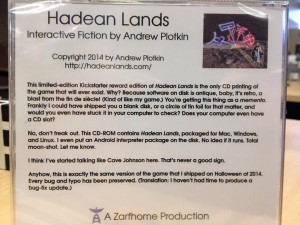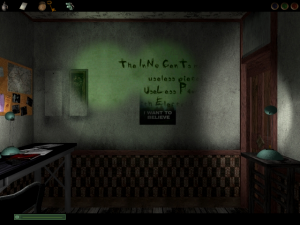Lights Out as Thinly-Veiled Doctor Who Fanfic
At one point in Dark Fall: The Journal, the player has access to a character’s smartphone and can read his recent emails. One of them was a reminder to renew his membership to a Doctor Who fan club. I read this as the writer trying to show that this character was a bit of a nerd. After all, this game was made in 2002, three years before the show was revived, which means he was still an active fan — active enough to pay fan club dues — of a show that had been canceled 13 years ago.
Lights Out was written by a different author, with a different perspective. [Correction: Both games have the same author. I don’t know why I thought differently.] Rather than mocking Doctor Who fans as nerds, he’s sending out dog-whistles to let them know he’s one of them. There’s a Sarah Jane mentioned in the historical materials in the lighthouse museum, as well as repeated mention of an oceangoing vessel called the Ribos. And of course the whole business of a glowing madman in a lighthouse is basically lifted from The Horror of Fang Rock. Apparently the Doctor even quotes the Flannan Isle poem at one point in Fang Rock.
And even apart from these directly-referential details, much of the story’s shape so far just feels Doctor Who-ish. It starts with a period piece, then throws in a mysterious anachronism. Some of the best episodes of classic Who started the same way. It gives us the framework of a ghost story, but then starts giving the ghosts sci-fi explanations like time travel and possibly aliens — one document mentions a large cylindrical object falling from the sky. And it’s all about figuring out what’s really going on, which is a large part of Doctor Who‘s charm — much of the time, the Doctor’s initial motivation for getting involved in the story is curiosity. This, it strikes me, is a point where licensed Doctor Who games have generally fallen down, by focusing mainly on confrontations with well-known bad guys.
Now, there are enough references to characters from Dark Fall: the Journal — most notably Polly White — to make it clear that this game takes place in the same universe, if not exactly the same timeline. And that makes the shift to the Doctor Who world-view strange, because the events of the previous game were pretty definitively supernatural, involving actual ghosts and evil spirits rather than time-travel and extraterrestrials. I suppose Lights Out could be about to retcon it all into rationalism, but that seems disrespectful. No, as far as I can see right now, we just have two coexisting stories, one about ghosts that are ghosts and one about ghosts that are not ghosts.
 Comments(3)
Comments(3)
